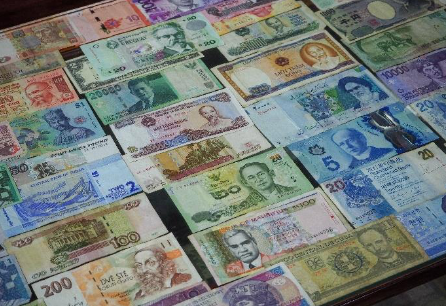Caracas, Venezuela, Oct 1: The Venezuela government introduced a new currency with six fewer zeroes owing to the country’s ongoing inflation crisis which has now lasted years. The highest denomination of the new currency will be 100 bolivars, as compared to the earlier higher denomination of 1 million bolivar.
What happened in Venezuela?
Before we explain that, let us talk a little about price of goods. When we pay for goods and services, we not only pay for their cost of production but also the value of the currency we buy them in.
For example, you might notice certain chocolates costing more in India than in the United States. If that currency loses value against the currency the goods are sold in, the price of those goods rises. Now let’s see what happened in Venezuela.
In 2014, the Venezuelan economy and hence the value of Venezuela’s currency – Bolívar, was highly dependent on oil exports. More than 90% of the country’s export earnings came from oil. These export earnings had enabled the government to pay for social programs intended to combat poverty and inequality through subsidies for low-income population of the country to health services. The government’s annual expenditures were quite high owing to this spend.
Then the global price of oil dropped. Foreign demand for the Bolivar to buy Venezuelan oil crashed. As the currency’s value fell, the cost of imported goods rose. And this is how the Venezuelan economy went into a crisis. At the time, Venezuela government decided to combat this by printing more money. It was expected that this printing could help the economy recover from the short-term price shock. The Venezuelan crisis, however, just got worse as the oil price continued to fall, compounded by other factors that reduced Venezuelan oil output. International investors began looking elsewhere, driving the value of the Bolívar even lower. In these conditions, printing more money simply made the problem worse. It added to the supply of currency, pushing the value down even further. As prices rose, the government printed more money to pay its bills. This cycle is what caused hyperinflation in the country.
Thus, hyperinflation in Venezuela is the currency instability that began in 2016 owing to the country’s ongoing socioeconomic and political crisis. The condition became so bad that by August 2018 the Bolivar was worth so little that it was wiser to use cash for toilet paper rather than buy toilet paper!
Why has the new currency been introduced?
The new currency is expected to help ease both cash transactions and bookkeeping calculations. Under the old payment system, a two-litre soda bottle could cost about 8 million bolivars. With many of the currency notes scarce, customers were forced to pay thick wads of paper (say you don’t have an INR 2000 note, you end up paying 100 of INR 20 notes). There was also a limit on daily withdrawals with banks allowing customers to withdraw a maximum of 20 million Bolivars in cash a day and sometimes even less if the bank is running short of bills.
Will Bolivar have less value with fewer zeros?
The officials confirmed that the value of Bolivar will not be impacted due to the elimination of six zeros. The move has been undertaken only to facilitate its use on a simpler monetary scale, as per Venezuela’s Central Bank.
This is the third time when Venezuela has cut down zeros from its currency. Three zeros were cut from Bolivar under the rule of late President Hugo Chávez in 2008, while current President Nicolás Maduro, cut five zeros in 2018. The bolivar is currently the weakest currency in circulation with 1 US dollar converting to approximately 4.08 million Bolívars as of September 25, 2021.


